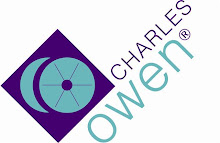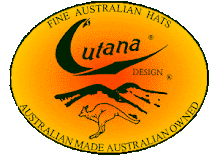Thursday September 1st After a summer spent catching up with domestic issues and planning the final stage of my Long Horse Ride, I flew in to Chicago to continue my journey. You may ask why Chicago rather than Salt Lake City where I finished riding in June. I wanted to drive the intervening distance to pick up items of baggage I had left en route, and also take the chance to visit some Pony Express places of interest I had missed while plodding along on horseback.
But first I picked up my hire car and drove down to Crown Point to spend the night with Debbie Oborn, who has now moved into the lovely old weatherboard house on her new property. And of course catch up with my Crown Point friends!
Then on to Jamesport, Missouri to stay overnight and share a bottle of wine with Patti, who will be taking Lady on as a member of her equine therapeutic team when I reach the end of the road. I was a trifle concerned that I had overdone the tippling the evening before when my bed seemed to be palpably moving the following morning, particularly as Patti seemed oblivious to anything out of the ordinary, But later transpired that there had been a large 5.8 earthquake in Oklahoma, apparently caused by fracking!
My Pony Express Tour by horseless carriage...
Outside the Alexander Majors house in Kansas City on Saturday September 3rd....
...a beautiful antebellum house built by Alexander Majors in 1856
As I hope you can remember by now, Majors was one of the three founders of the Pony Express. He had already built up his own freighting company before joining forces with William Russell and William Waddell in 1855. Unlike William Russell, a risk taker who was the driving force behind the project, Majors was more cautious and conservative. Together with Waddell, he was by no means enthusiastic about the idea of the Pony Express, quite rightly as it turned out. A pious and sober man, it was Majors who is credited with issuing bibles to all the Pony Express riders, and requiring them to swear an oath promising among other things to abstain from intoxicating liquors while in the employ of the company. The number of empty liquor bottles later found buried at some isolated Pony Express stations suggests that the oath was not always adhered to!A Pony Express statue silhouetted against the sky near Seneca as I approach Marysville that evening...
Sunday September 4th and I manage to clock up a couple of Pony Express stations in Nebraska that have been moved from their original sites. Firstly Willow Island station, which was moved from its original site nine miles further downstream and on the other side of the Platte River to its current site in Cozad town park...
Machette's was originally a two storey building with stables below, but this may be just the top section.
The wedding cake I am posing in front of is Buffalo Bill's Scout's Rest Ranch, which was another must see in Gothenburg...
William Cody or "Buffalo Bill" certainly worked for Alexander Majors and carried messages for the company in his youth. This larger-than-life character raised the profile of the Pony Express through his Wild West shows, but there is doubt over many of the stories which surround him. This includes the legend that he made the longest Pony Express ride, and in fact some buffs believe that he did not ride for the Pony Express at all.
Buffalo Bill built this house in 1886 on a four thousand acre holding he owned, but sold it twenty-five years later for financial reasons. He used it as the base for his touring Wild West shows, and the ranch includes a large restored horse barn.
While riding to Register Cliff in May, I passed the Fort Laramie National Historic Site but did not have time to visit, so early on the morning of Monday September 5th I turned up bright eyed and bushy tailed at the visitor's centre. This iconic site (see my earlier post for brief historical details) was abandoned in 1895, but most of the buildings were sold off to local homesteaders, as a result of which many survive and have since been renovated.
The 1918 construction of a monument by the State of Wyoming and "a few interested residents" demonstrated an increasing concern for the site....
and in 1938 it became a National Historic Site. Since then most of the buildings have been beautifully restored in their existing locations, and it is an impressive attraction well worth visiting. Allow a few hours to enjoy it!
A splendid barrack block ....
which apparently provided all mod cons for the soldiers...I always keep a lookout for the nearest tornado shelter in these parts, but this is ridiculous.....
A grammatical clue to remind me which country I am in...
My horseless carriage tour bucket list had included Fort Bridger, but after all this palaver I only reached there in time to have a whistle stop tour before most of it closed - at least the woman at the gate took pity on me and waived the entrance fee! But the highlight for me was the original Pony Express stable in the sutler's complex, which I was able to see from the outside....
..and the inside....
Jim Bridger exhorting passers by to patronise the Jim Bridger store on the other side of the road..






























No comments:
Post a Comment